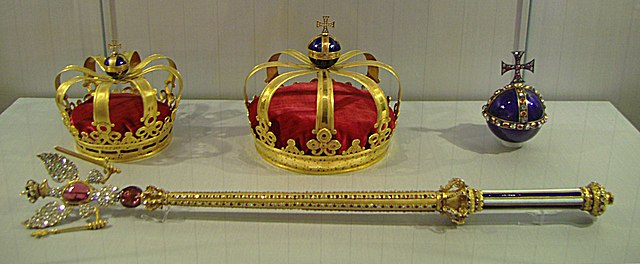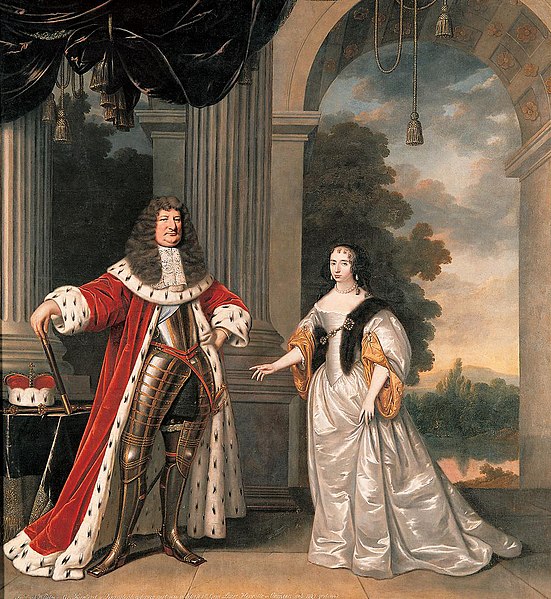The Kingdom of Prussia constituted the German state of Prussia between 1701 and 1918. It was the driving force behind the unification of Germany in 1866 and was the leading state of the German Empire until its dissolution in 1918. Although it took its name from the region called Prussia, it was based in the Margraviate of Brandenburg. Its capital was Berlin.
The Prussian Crown Jewels, Charlottenburg Palace, Berlin
Prussian territorial acquisitions in the 18th century
Attack of the Prussian infantry at the Battle of Hohenfriedberg in 1745
Prussia (orange) and its territories lost after the War of the Fourth Coalition (other colours)
Prussia was a German state located on most of the North European Plain, also occupying southern and eastern regions. It formed the German Empire when it united the German states in 1871. It was de facto dissolved by an emergency decree transferring powers of the Prussian government to German Chancellor Franz von Papen in 1932 and de jure by an Allied decree in 1947. For centuries, the House of Hohenzollern ruled Prussia, expanding its size with the Prussian Army. Prussia, with its capital at Königsberg and then, when it became the Kingdom of Prussia in 1701, Berlin, decisively shaped the history of Germany.
Situation after the conquest in the late 13th century. Areas in purple under control of the Monastic State of the Teutonic Knights.
Prussian Homage by Jan Matejko. After admitting the dependence of Prussia to the Polish Crown, Albert of Prussia receives Ducal Prussia as a fief from King Sigismund I the Old of Poland in 1525.
The "Great Elector" and his wife
Frederick I, King in Prussia








